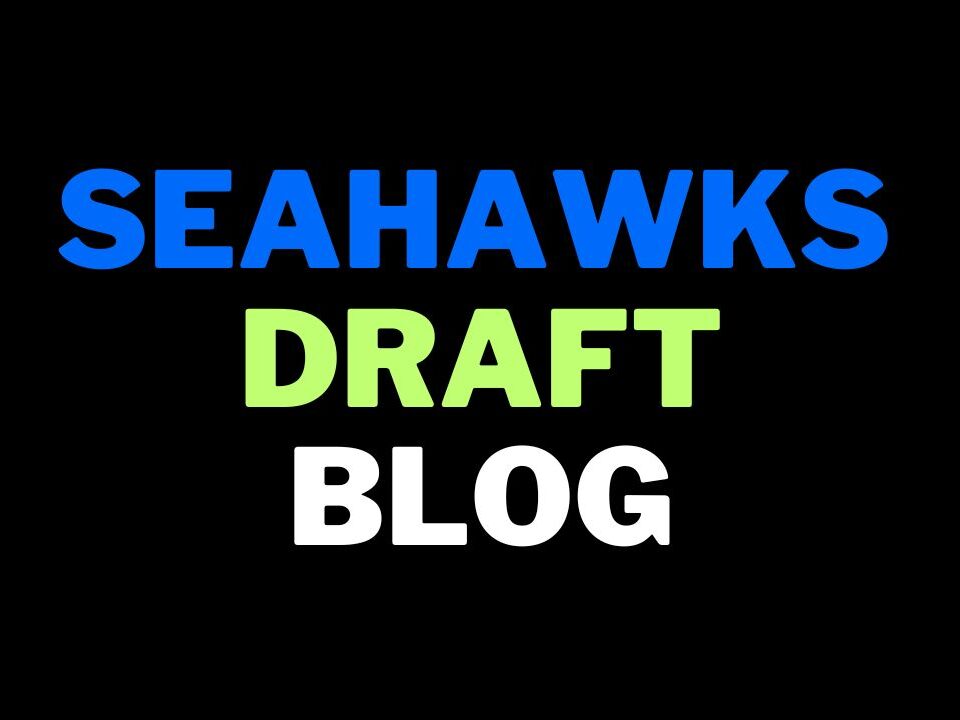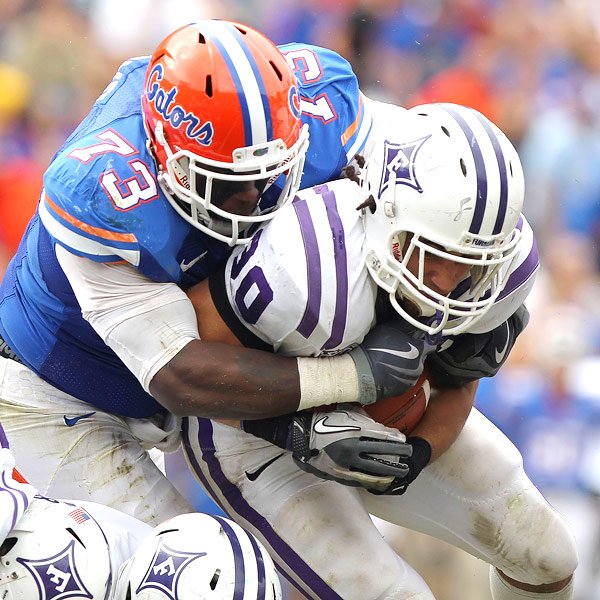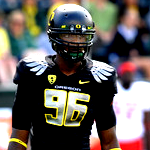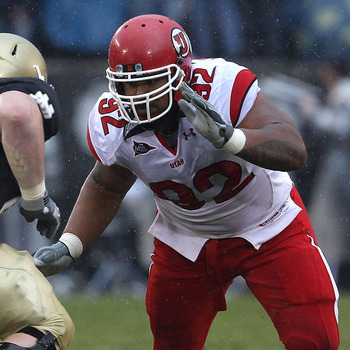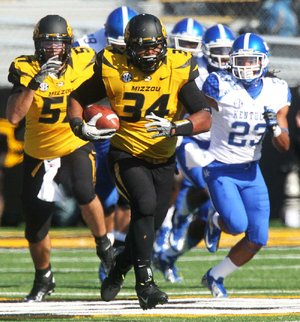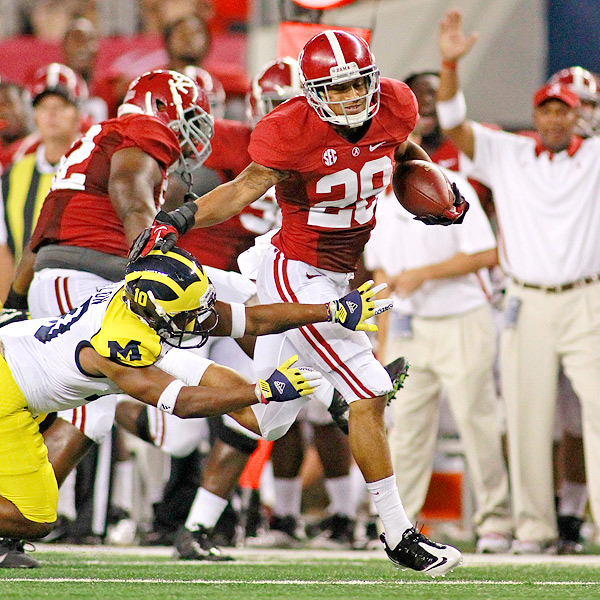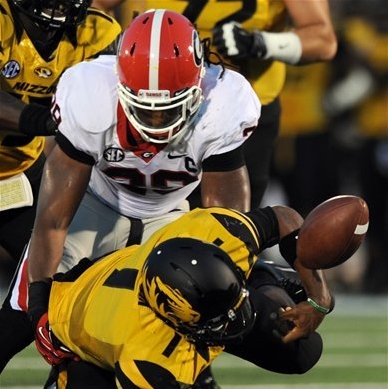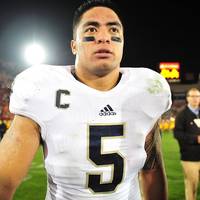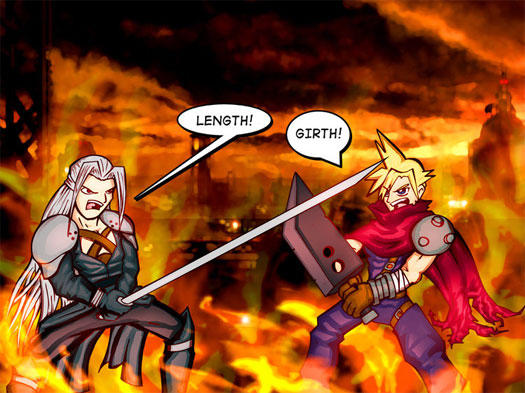If you are a fan of well written articles and an evaluator who just “gets it”, I’d recommend The Rookie Scouting Portfolio by Matt Waldman. I like him personally because I watch tape on prospects and invariably come to the same conclusions he does. Like me, he’s one of a few charter members of the Russell Wilson NFL fanclub that staked their claim before last season. If you read the Studying the Asterisk article that made the rounds last year, then you are already familiar with his work. I guess this has nothing to do with the topic at hand, but do yourself a favor and bookmark his blog if you haven’t already. It’s great.
I try to check in with his site every couple of weeks. It’s useful as a double check for my own analysis; to see if there are nuances he picked up that I missed. It was during my most recent visit that I noticed a link to a peculiar draft website that has apparently gotten a lot of pub in social media circles. The site is titled “Bill Walsh: How I Evaluate Each Position.” The site is a clever idea- a compilation of various written analyses by Walsh covering every starting position. Walsh, one of the greatest and most influential NFL coaches of all time, was an intellectual above all else, and his analysis remains relevant all these years later.
As Danny Kelly is fond of pointing out, Pete Carroll is a bit of a Bill Walsh protege, having been San Francisco’s defensive coordinator in the mid-90s while Walsh served as a consultant. In Win Forever, Pete Carroll says himself that Bill Walsh was a major influence in how he evaluates and handles his players, specifically at quarterback. That proved valuable as Carroll mentored one star quarterback after another at USC, only to see most of them flounder when leaving Carroll’s side for the NFL. Reading Bill Walsh talk about quarterbacks, you’d think he was talking future tense about Russell Wilson, when he’s actually talking past tense about Wilson’s boyhood idol, Joe Montana.
I’ve often thought that Carroll was the 21st century equivalent of Walsh: brilliant, unique, creative, and easy to learn from. His boyish exuberance stems not from some mystical fountain of youth, but a mind that never tires of new ideas and new challenges. Walsh was stern if not prickly, but his passion for the game burned just the same. Both have proven masters at building dynastic rosters on the fly from spare parts and savvy drafting. If you know where to look, you can see Walsh’s fingerprints in many of the things that Pete has done.
I can’t say for sure if Pete and Bill would see eye to eye on defensive tackles, although reading Walsh’s breakdown of the position, it sounded exactly like the kind of player the Seahawks need:
Ideal size: 6-2, 290
Must have the girth, strength, ballast to hold off the guard, or to step into a tackles’ block without being knocked off the line of scrimmage.
Quick, strong hands to grab and pull are critical. This is common with the great tackles. The hands, the arms, the upper body strength and then the quick feet to take advantage of a moving man, just getting him off balance.
You are looking for somebody who can move down the line of scrimmage and make a tackle, pursuing a ball-carrier. That would be lateral quickness in a short area, being able to get underway and move over and through people. If you get knocked off the line, or get knocked sideways or knocked off balance, you cannot play this position. You must be able to work your way through people, so that kind of strength is a must.
The best defensive tackles move the offensive guard back into the quarterback. (emphasis mine) They won’t have nearly as many sacks as others, but if they can move the guard back into the quarterback, then the quarterback has to avoid his own lineman as if he were a pass rusher before he throws the ball. So this is a key ability.
On a few occasions already, Rob has highlighted pass rush at defensive tackle as Seattle’s biggest need. Derek Stephens voiced similar sentiments at his blog during his roster analysis. But here is where I interject: with respect to Seattle’s needs, guys that can provide production from the interior are extremely rare and ridiculously valuable. The Seahawks registered 36 sacks last season, tied with Buffalo for 18th in the NFL. They were 16 sacks behind the league leaders Denver and St. Louis. If the ultimate goal is to reach the 50 sack plateau, Seattle has a long way to go, and even Geno Atkins wouldn’t add 16 sacks on his own. The Seahawks actually produced 9 total sacks from the defensive tackle position last season anyway- so it’s not like the group was a pile of crap by any means.
Of course, there is so much more to pressure than sacks, and this might be more true at defensive tackle than anywhere else. Which is good, because I really doubt we are finding an interior 10+ sack a year monster in this draft class. If a scheme is built to have the 3-tech play the role of the cleanup hitter, it wont work unless you have a hall of famer at that spot.
But Walsh ends his analysis with something hopeful. Most people judge a 3-tech by how often he’s getting into the backfield: how many sacks and tackles for loss he accumulates. Walsh says the great defensive tackles aren’t racking up stats, but rather they are pushing the guard into the quarterback and forcing him to move. John Schneider, when talking about Bruce Irvin in his combine interview today, also used that term. He specifically mentioned that Irvin was forcing the quarterback to move. (On a related note, he singled out Jason Jones as a free agent they want to “keep an eye on” in free agency).
I really doubt we’ll find the next Geno Atkins this year, but we might find a component pass rusher: a player that can be the table setter. Finding the next Derek Wolfe might prove to be enough. Not enough to reach 52 sacks of course, but a positive first step in that direction.
Here are how some of the best defensive tackle options stack up as pocket pushers:
Star Lotulelei:
Though inconsistent and under-developed, I’d wager that Pete Carroll and Dan Quinn salivate when thinking about what they could do with Lotulelei’s raw ability. I saw one play against USC’s stellar run blocking line where he drove back a double team straight backward and pancaked both blockers- and this was on a rushing attempt. I have literally never seen that before.
Lotulelei is quick off the snap and possesses near Suh levels of pure strength. He tends to keep his arms locked on the target and seems almost completely foreign to the basics of arm technique: almost no attempts to body control, yanking to defeat balance, rips or swims. He seems perfectly content to treat most guards like lineman sleds. And often, it works.
At Utah, Lotulelei was not a consistent pocket collapsing force. He could be in the pros. He has by far the most untapped potential at the position in the 2013 draft. He will likely be a top five overall selection, and barring a buddy-buddy trade with Jacksonville at #2, I really doubt we’d have a shot at him. And yes, that trade would cost way more than just Matt Flynn.
Sharrif Floyd:
Floyd is a lean 303 pounds and probably the best pure athlete in this DT class. (I consider Ansah to be a 5-tech with interior versatility). Floyd’s first step and arm use are median level at best compared to his peers, but he still creates pressure by never giving up. He never stands still or concedes- his constant thrashing and fighting reminds me of watching a rodeo bull.
Floyd tracks the ball very well and I’d easily say that he’s better against the run than he is at disrupting the pass. After watching several of his games, I wasn’t shocked at all to learn that he’s tallied just 4.5 sacks over 3 seasons. Floyd just isn’t a very good pass rusher, despite being a gifted and versatile athlete. Reminds me of Kentwan Balmer when he came out of North Carolina in that regard, though I think Floyd will have a better career.
Florida mixed 3-4 and 4-3 looks. I saw Floyd play every position possible on both of those fronts, which is pretty impressive. He has long, strong arms and can disengage from run blocks well enough that I think he can make a good NFL career as a run stopper, which is why I think he needs to play either a 5-tech or a 3-4 defensive end position in the NFL. Playing in such a role gives him more space to use his athleticism, and doesn’t require him to bag tons of sacks to be considered good. I think his hype level is a little out of control, but then again 3-4 defensive ends have been known to go early and there aren’t a ton of them at the top this year. The former GM who first highlighted Floyd as a top 10 pick was Scott Pioli, who drafted a 3-4 defensive end himself in the top three picks just 4 years ago.
Sheldon Richardson:
Richardson is a well balanced defensive tackle who’s most prominent feature is his speed and pursuit capability. Mike Mayock might have said it best when he observed that Richardson moves like a linebacker at the defensive tackle position. Richardson is a red-ass that keeps after the play even when it’s far away from him, and can be seen chasing down tackles from 20 or more yards away several times a game. He collapses the pocket by far the most often out of the known 2013 defensive tackle options, mostly because guards cede so much ground out of respect for his speed and explosiveness.
I had to retire from Division II because of people who played the game like Richardson does. I couldn’t protect my body with my short arms and defensive tackles would rip me forward to execute the swim move and I just couldn’t stop it. Ceding ground with a backpedal helped, because it’s harder to swim someone when they are moving away from you. Of course, doing so came at a cost as I was essentially walking the defensive player into the pocket. This is why a pocket can only last so long, as guards and tackles are often ceding ground strategically while protecting themselves from their assignments next sudden attack.
This is what Richardson does to guards. He has a strong upper body with violent arms, and guards have to respect his quick step and ability to crash a gap with his speed. I tallied a very high number of plays where Richardson got 3 yards deep in the pocket in little time despite doing very little to earn it because the guard was appeasing him with real estate.
Richardson only had 4 sacks last season, and just 2 sacks the season before, but those stats don’t tell the story of how he impacts the pocket. He had a ton of near sacks and quarterback hits, too.
I think Richardson will probably go in the top 14 picks- I just can’t see him getting past Carolina barring a disaster. Richardson stands so far ahead of his peers at collapsing the pocket that I’d say he’s worth trading up for, even though it will mean losing picks in a draft where a 2nd rounder feels an awful lot like a 1st.
Kawann Short:
Short is maybe the draft’s “craftiest” defensive tackle- an expert at exploiting mistakes and sneaking through the smallest of gaps to gain backfield penetration. He’s particularly effective on running plays against a zone blocking scheme. Zone blocking scheme tends to move it’s blockers one direction in unison like a wave. Short seems to have figured out a way to jump those gaps at the start of those runs, as I saw him break into the backfield far more against zone runs than anything else.
Short has by far the best college production among this group (excluding Brandon Williams from Division II), posting six or more sacks each of the last three seasons, with 49.5 total tackles for loss during that span. And until I read that Bill Walsh analysis, Short was my favorite defensive tackle in this draft.
The problem with Short is that despite his polish and skill, he’s more of a mistake exploiter than a pocket collapser. He’ll scatter a few quality plays from time to time, but I would estimate that he pushes the pocket with about half the frequency that Sheldon Richardson does.
I see Short as an excellent option for a 4-3 team that likes to blitz. Spread the blocking lanes out with blitzers and he’ll exploit that extra space. Problem is, Carroll’s late season actions indicate that he wants to reduce his blitz count going forward and rely on a four man base rush instead. Since Pete has come here, he’s had to blitz to get sack production and guys like Irvin and Clemons have typically struggled without that boost. Drafting Short will give us a weapon, but it might also increase our dependency on the blitz to get the most out of him.
Or to put it another way, I see Short as a guy that is a clean up hitter more than a table setter. He doesn’t make the players around him better per se, but if you help him out a little, he’ll get you some production.
Sylvester Williams:
Williams is a complete defensive tackle who at times can be quite dominant. He’s bigger than most 3-techs at 313 pounds, and holds up very well against the run with a strong anchor and good rush awareness. He could easily transition to the 1-tech if needed, or Red Bryants “big 5-tech” role for that matter. That versatility holds a lot of appeal for John Schneider who prizes versatile players, so it should hardly be a shock that a Seahawks scout was seen talking to Williams at the Senior Bowl. If Seattle allows Branch to leave in free agency it could potentially telegraph an intention to select Williams, as there aren’t a ton of versatile defensive tackles in this draft that are quality options.
Williams’ best asset is his fast first step, which is by far his best tool for achieving penetration and push. Brandon Mebane once had 5 sacks playing as a run stuffing 1-tech in 2008. He did it because a 310+ pound man that explodes into a gap before you’ve even fully left your stance is something that’s really hard to stop. Mebane’s 2008 season was so impressive that Seattle moved Mebane to the 3-tech hoping to optimize his talent during the following two seasons. It didn’t work out, and drafting a similar player like Williams carries the risk of repeating history.
Which isn’t to say that having an excellent first step is a bad thing, and fortunately Williams also possesses a strong upper body and active hands. Yet strangely, for a player with size, power, fast hands and fast feet, Williams does not push the pocket as often as I would have expected. With Williams you know whether he will be successful or not within the first second. If he doesn’t succeed exploding into a gap and a chance for a swim move doesn’t present itself, he’s often content with a stonewall. It may be partially due to his short arms- which are just 32 ⅝” long. When I watch Williams I see a lot of effort with his hands but not a corresponding amount of results.
Williams is a good, well rounded player, and displays I think the best awareness of any defensive tackle in the draft- rarely will you see a defender that can sniff out and anticipate a screen faster than Williams can. I see him as being a long term quality starter in the Alan Branch mold, but not a difference maker in the pass rush and not a consistent pocket collapser.
Brandon Williams:
Brandon Williams is the most unique defensive tackle in the draft. Looking like a “chiseled” 340 pounds, Williams is a better athlete than most players his size. Based on what I saw of him during the Senior Bowl and practices, he has a fast first step and at time shows the best pure power in the draft outside of Lotulelei.
What surprised me the most was how good his arms were- he is surprisingly one of the best defensive tackles in the draft at shedding blocks with his sudden arm moves and substantial upper body strength. What surprised me even more was how bad he was against the run despite weighing 340 pounds. He can get bulldozed by double teams and pushed back even by single blocks, often because of high pad level and an inability to easily locate the ball while being drive blocked.
You would think at 340 pounds Williams would be a pure nose tackle, but his strengths and weaknesses align ironically with the 3-tech role instead. Williams played mostly 3-tech for Missouri Southern, a Division II school, and currently holds his school’s all time sack record with 29 sacks over 3 seasons. Williams was up and down at the Senior Bowl, though he turned heads with a strong final day of practice. People often say that Senior Bowl practice matters more to evaluators than the game itself, and that strong practice has helped remove some of the level of competition fears surrounding him. It’s been enough for some to suggest he could be a potential top forty pick, and it’s considered unlikely that he’ll get out of the 3rd round.
Williams is a strange prospect, and Carroll does like “unique” talents. Yet as the slowest member of this defensive tackle group I’m not sure how Carroll would react to that; since he worships speed. Bill Walsh was pretty big on speed too, and in fact it was a crushing defeat to Walsh’s team during Pete’s early coaching days that served as the formative moment of that philosophy. At least, that’s how Pat Kirwan remembers it.
I’m not sure if Williams fits, but he can push the pocket better than most, and is a better pure pass rusher with his technique than you would think.
Jordan Hill:
Hill isn’t very big nor does he anchor well, but he is probably good enough against drive blocks to be a non-specialist defensive tackle. He partially makes up for this by being consistently very fast off the snap, and keeps a good pad level.
Hill’s uses his arms a lot like a 3-4 defensive end would, excelling at disengaging via extension, not unlike Greg Scruggs but with shorter, weaker arms. He has excellent backfield vision and tracks the ball well. If I had to highlight Hill for being the best at anything out of this group, I think he might have the best short area quickness. He can cover two yards side to side very fast, and despite being weak to interior drive blocks he’s actually an asset against slower developing stretch runs because he can disengage and cover short areas of grass very quickly. Not only is he very quick, but he’s exceptionally instinctive and knows where to move to keep a runner in front of him while keeping his shoulders square.
Unfortunately, Hill can’t seem to use his shed ability to actually swim past defenders, which I theorize is from a lack of functional upper body strength. If he had it, I think he’d be using it. He also lacks lower body strength and is impotent as a bull rusher.
Hill is a bit like Kawann-Short-lite as a 3-tech. He can sometimes slip through exploitable mistakes but he doesn’t force guards back. He could be a serviceable 3-tech, but not a star. I like him more as a 3-4 defensive end, where he can use his quickness around the edge more and will get more mileage out of his talent for two-gapping and reading the football. Then again, Hill stands just 6’1″ and doesn’t appear to have the longest arms, so he’d be a bit of a gamble in such a role. Those factors might explain why he’s expected to be drafted in the mid to late rounds despite having some talent.
So who’s the best?
I would say that the only great pocket collapsing defensive tackle in this draft is Sheldon Richardson, and I’d say he’s far ahead of second place. I think Star Lotulelei comes next, followed by Brandon Williams, Sylvester Williams, Kawann Short, Sharrif Floyd and Jordan Hill. Every one of these players has something he’s special at, but Richardson is the guy who will disrupt the passing game the most. His speed is a huge bonus for our speed obsessed front seven as well.
Walsh’s criteria is illuminating when it comes to sorting the great players from the good ones. I could envision scenarios where all of these options could become worthwhile component pass rushers, with Richardson being the clear best choice to be an impact player for Pete Carroll’s needs. I think Short grades out better overall than his ability to push the pocket indicates, and could be a great pick if Seattle is willing to design a more aggressive defense that can create enough confusion for Short to exploit mistakes and hesitation.
